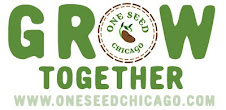
My son's oldest friend used to live down the block from us. About 15 years ago, they asked us if we wanted a crab apple volunteer that had popped up in their yard.
It was about 2-3 feet tall, so we dug it up and transplanted it. For years it didn't do much-- no blossoms, no fruit, although it grew beautifully. Then several years ago it blossomed for the first time, and the following year started producing fruit. Just a handful at first, but then more and more, until last year we ended up with several bushels. And not crab apples, but rather full baby-fist sized actual apples.
We started researching apple trees to see if we could get it to produce usable fruit, and to find out what variety we had.
Of course, it's not any kind of variety at all. It's a volunteer, so by definition it's wild. And there are no "wild" apples. All commercially grown fruits, including heirloom and organically grown varieties, are grown from grafted root stock; essentially all apple trees are clones, with an entire orchard producing identical fruit. There are experimental orchards that grow trees from seed, in the hope of developing a new commercially viable fruit, but all commercial growers, and the ones you buy for your backyard, use standard varieties, and just keep rooting/grafting the trees to get new trees.
This is one of the reasons that it's such a tragedy to lose heirloom varieties in apples. Once it's gone, it's gone. You can't just plant an apple seed and hope to get a Gala apple. You might; but more likely you'll get something entirely new and not necessarily edible.
 Our apple tree grew from a seed. Possibly dropped by someone eating an apple in the backyard; perhaps by some critter, um, dropping a seed on its way through the garden. The apples we get are small and very tart, but edible. I thought I might be able to try making my own vinegar; unfortunately to get usable apples you really have to treat the tree, both to get rid of the many pests that apple trees attract, and to discourage fungus, a very common problem (our tree has some sort of fungal disease, in fact). Last year I used the apples to make a border to one of my vegetable beds, and then in the fall dug the apples into the dirt to compost.
Our apple tree grew from a seed. Possibly dropped by someone eating an apple in the backyard; perhaps by some critter, um, dropping a seed on its way through the garden. The apples we get are small and very tart, but edible. I thought I might be able to try making my own vinegar; unfortunately to get usable apples you really have to treat the tree, both to get rid of the many pests that apple trees attract, and to discourage fungus, a very common problem (our tree has some sort of fungal disease, in fact). Last year I used the apples to make a border to one of my vegetable beds, and then in the fall dug the apples into the dirt to compost.I feel a foolish pride in my wild volunteer apple tree, despite the fact that I had nothing to do with its birth, other than transplanting it to a sunny spot. Maybe this year I'll try to save some seeds, and see if I can start another wild baby.
Apple Bread
more or less from foodgeeks.com
1 cup oil (I used hazelnut, but any nut oil, corn oil, safflower, or canola will work)
3 eggs
1 1/2 cups sugar
1 tsp. vanilla
2 T. whisky, rum, or liqueur
3 cups apples, diced
3 cups all-purpose flour
1 tsp. cinnamon
1 T. orange zest
1 tsp. baking soda
1 tsp. salt
1 cup chopped nuts or raisins (optional)
In a large mixing bowl, combine and set aside the oil, eggs, sugar, liquor and vanilla. Sift flour, cinnamon, soda, and salt in a separate bowl. Add dry ingredients to the oil mixture gradually. Add apples and nuts/raisins, if any. Batter is very thick, because the apples will add a lot of moisture during baking. Bake in 2 regular loaf pans for 1-1/2 hours at 300°F. Cool 10 minutes in the pan.









I love the apple border looks terrific and great compost once rotted but I guess you don't have a bear problem. They would just love you laying out a smorgasbord like that for them ;-)
ReplyDeleteHaha! I'm in the middle of Chicago so no bears, although we have seen deer and coyote just not in the yard! One of the mind-bending things about the web--meeting gardeners who have to worry about bears! :D
ReplyDelete